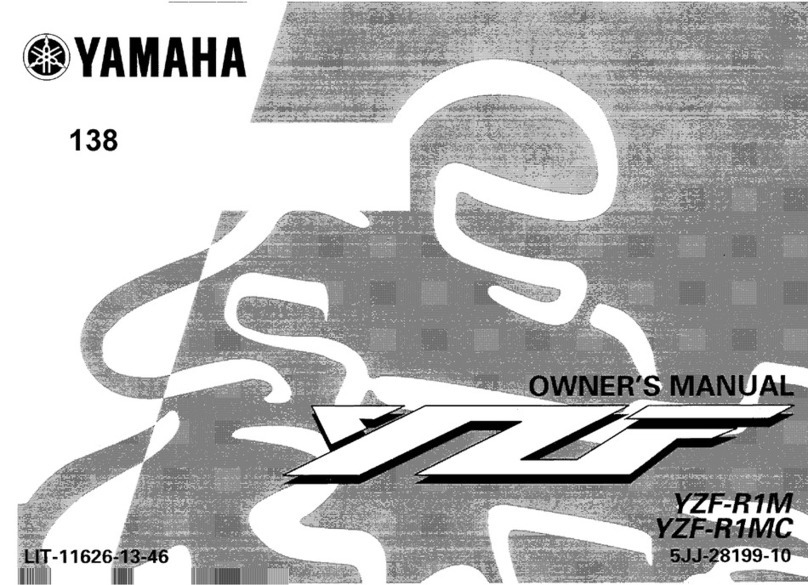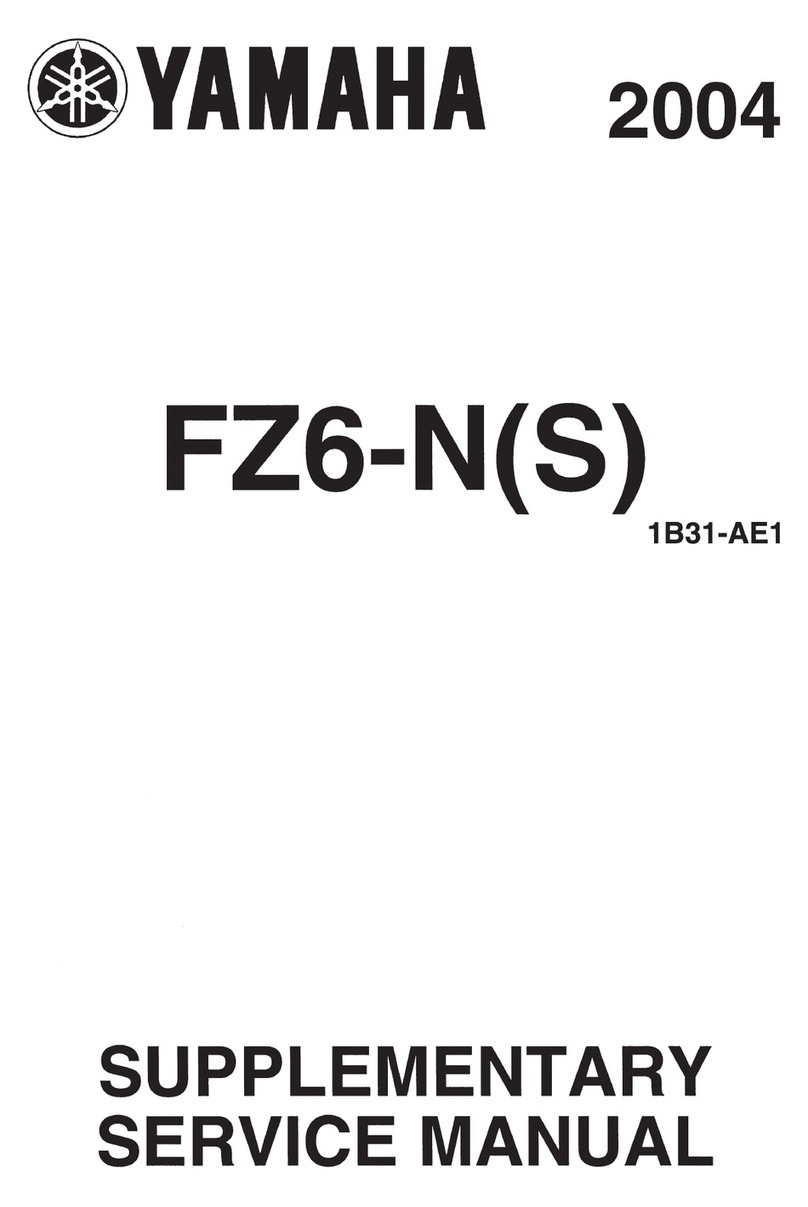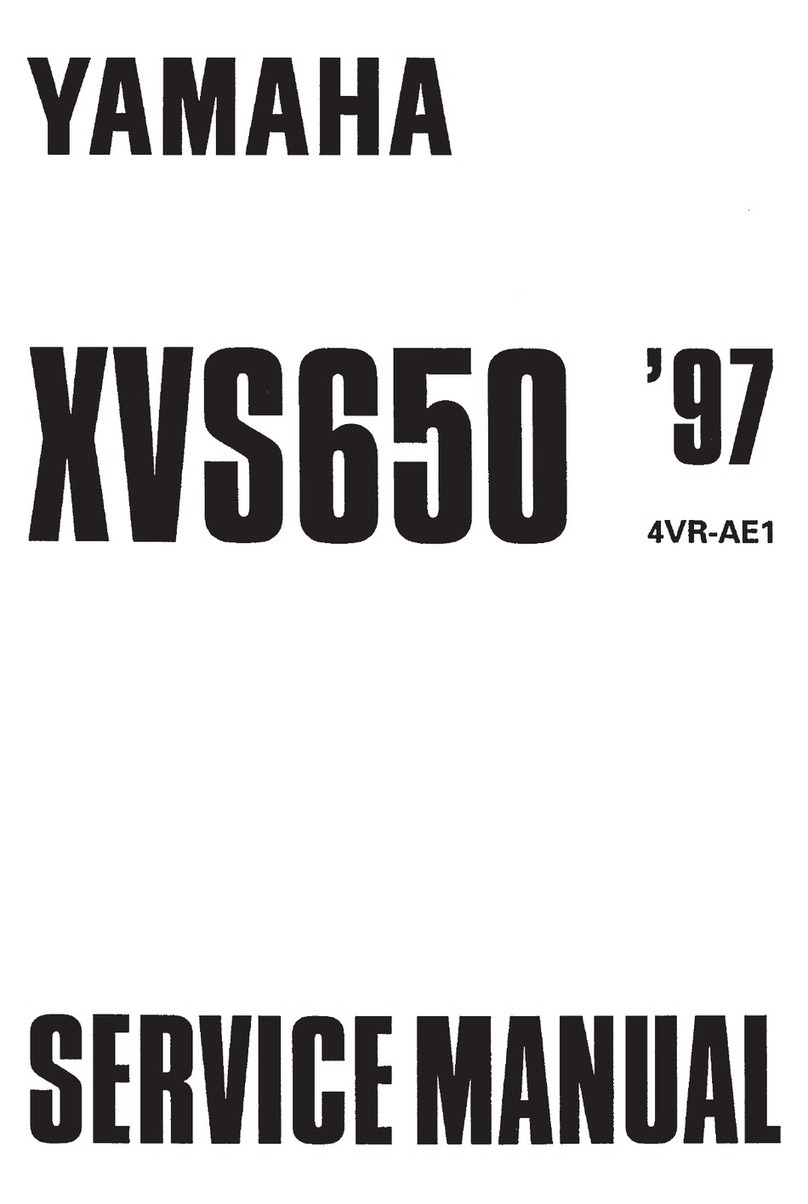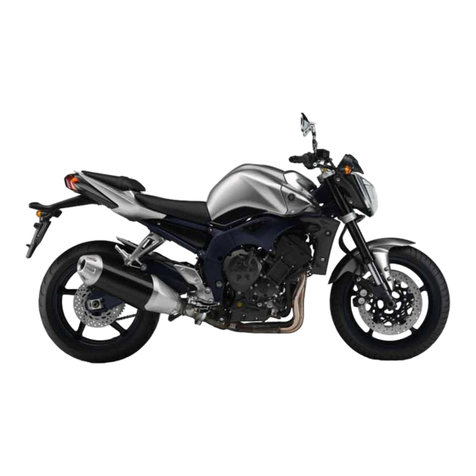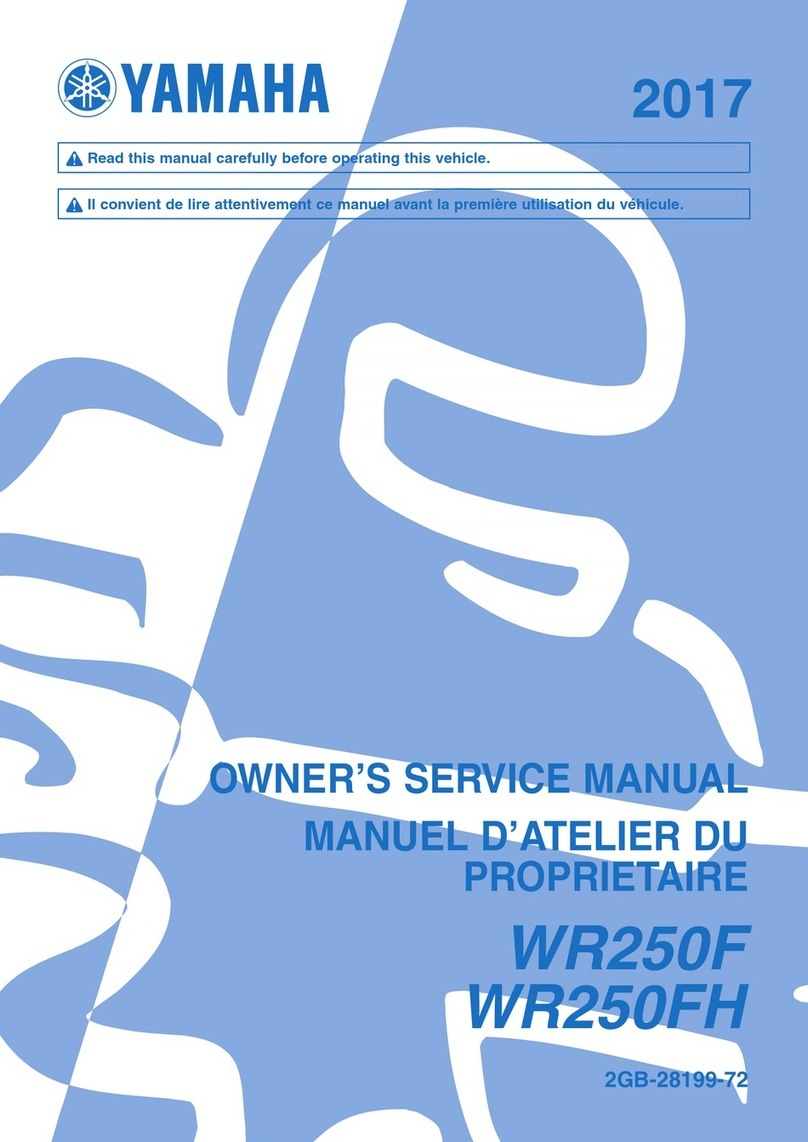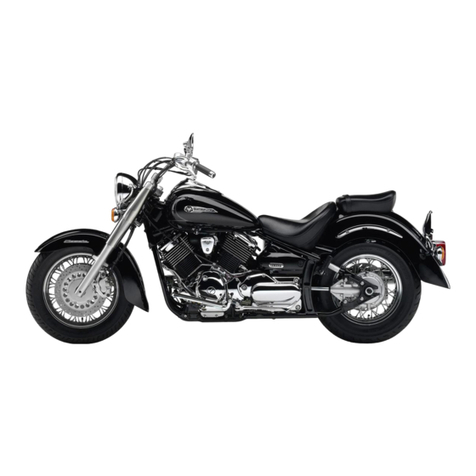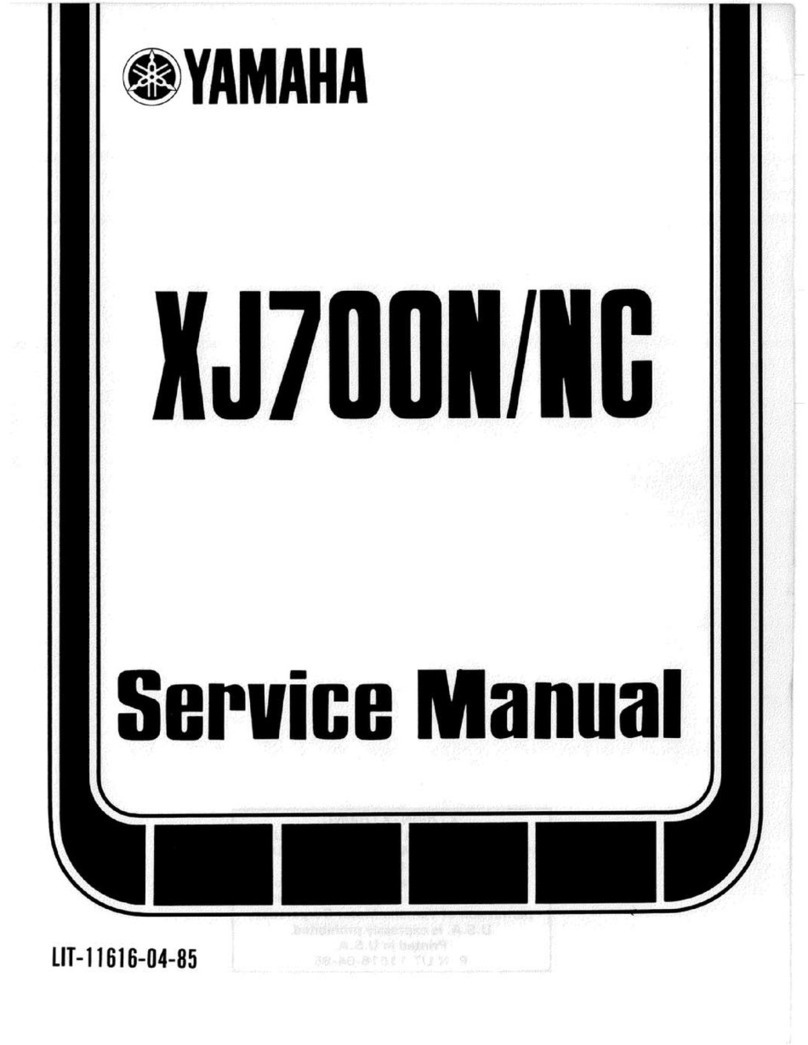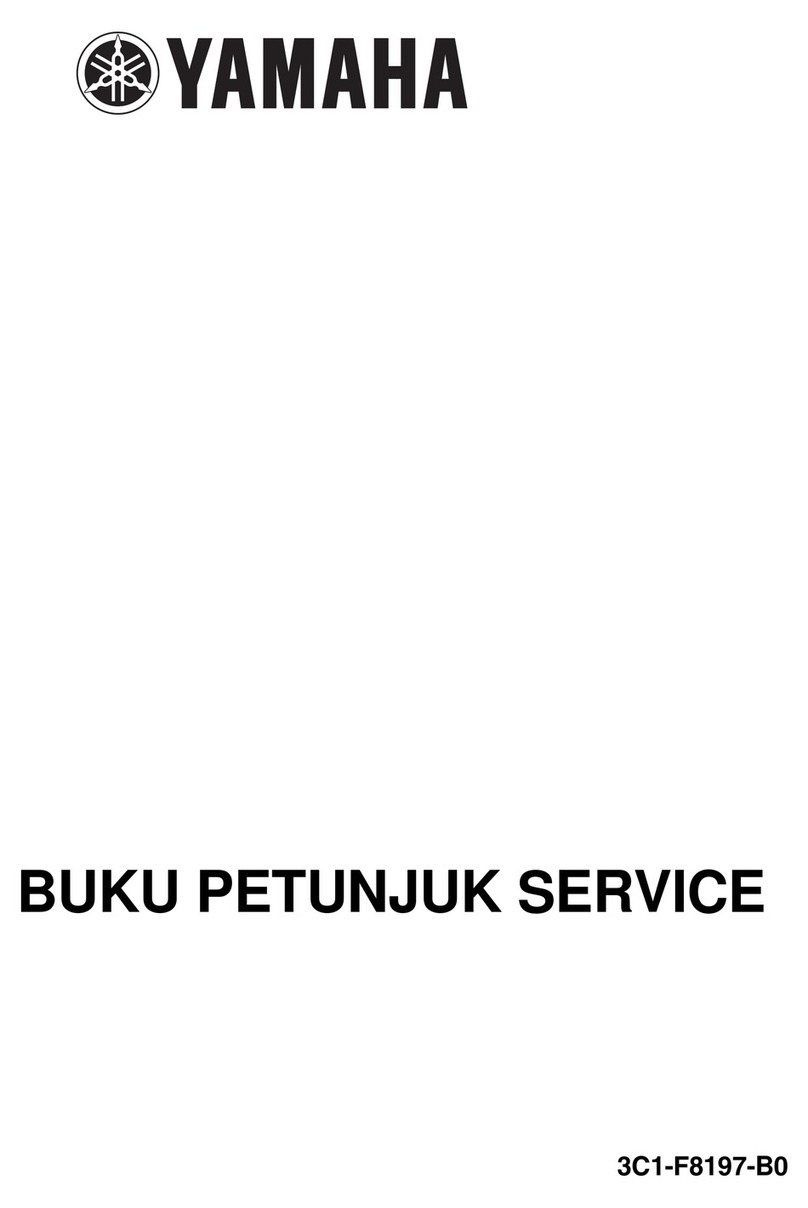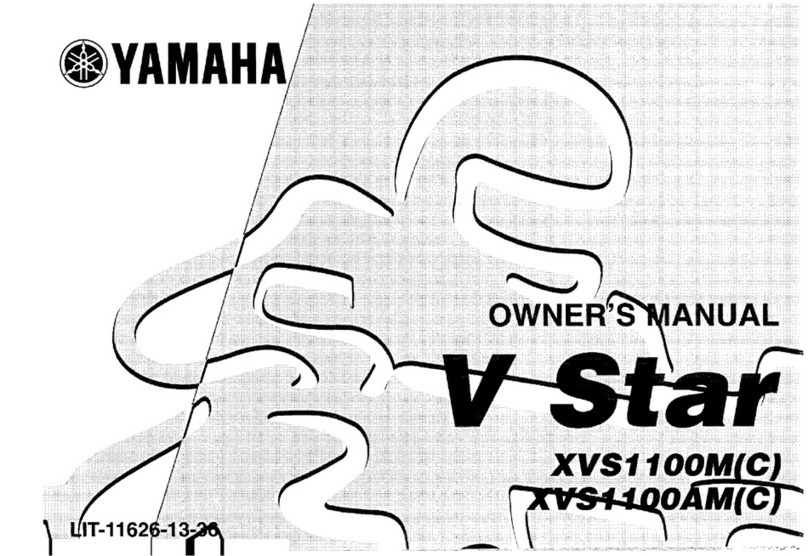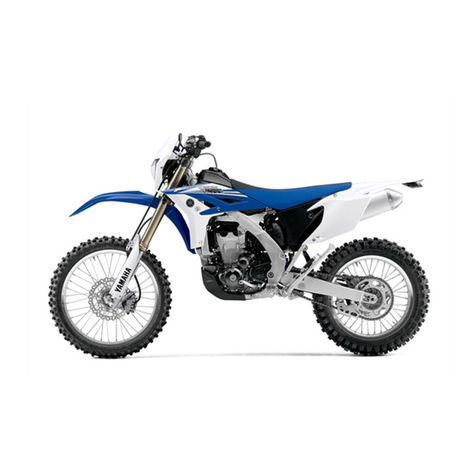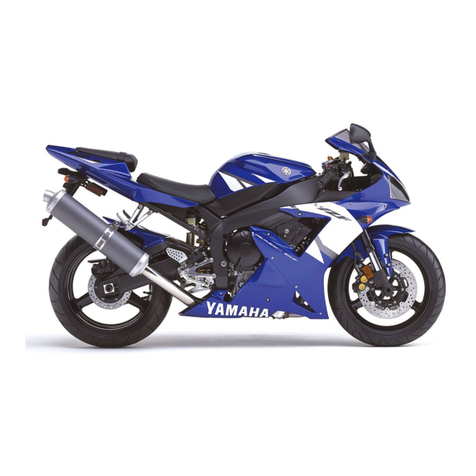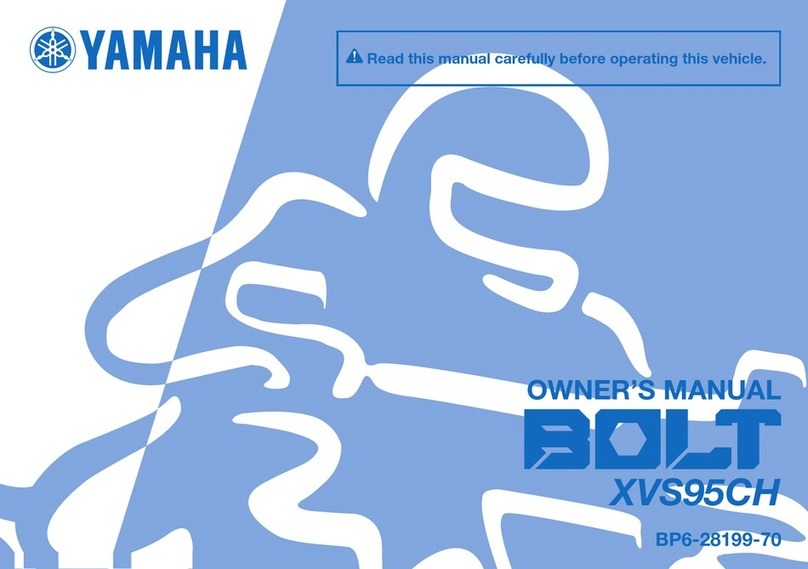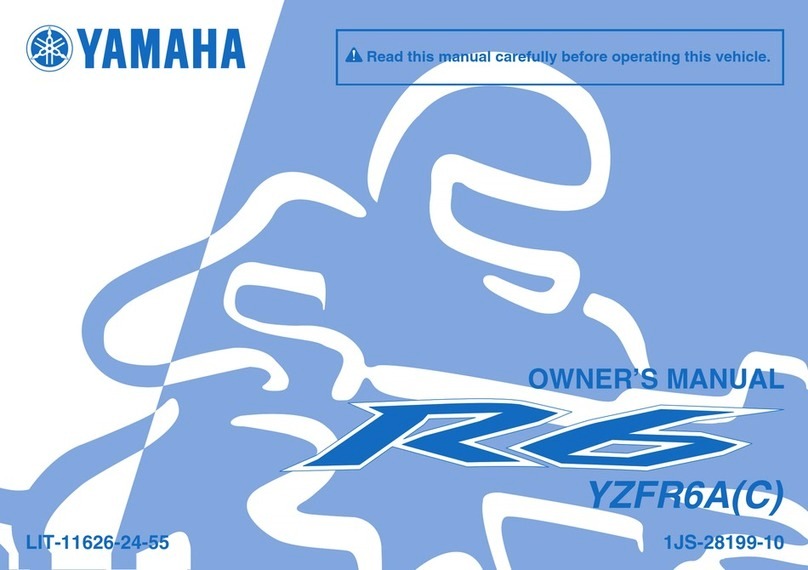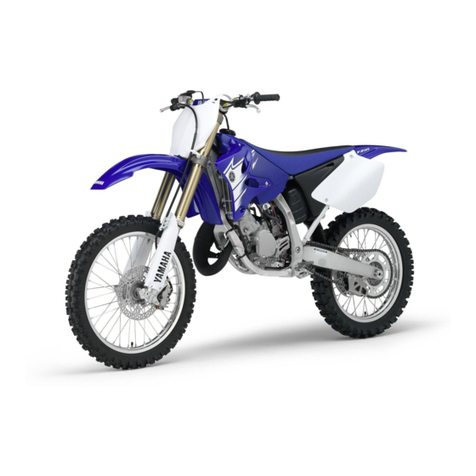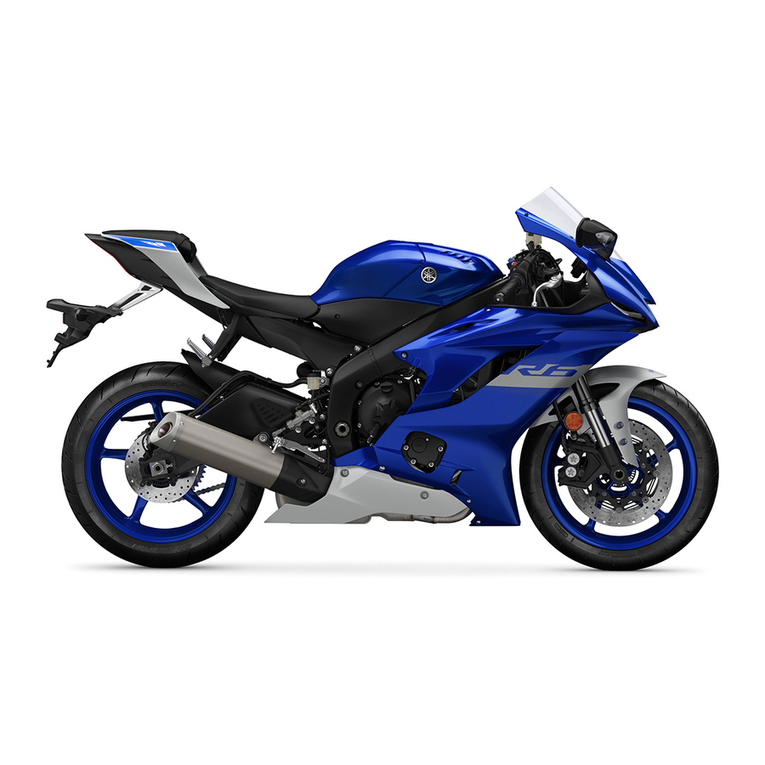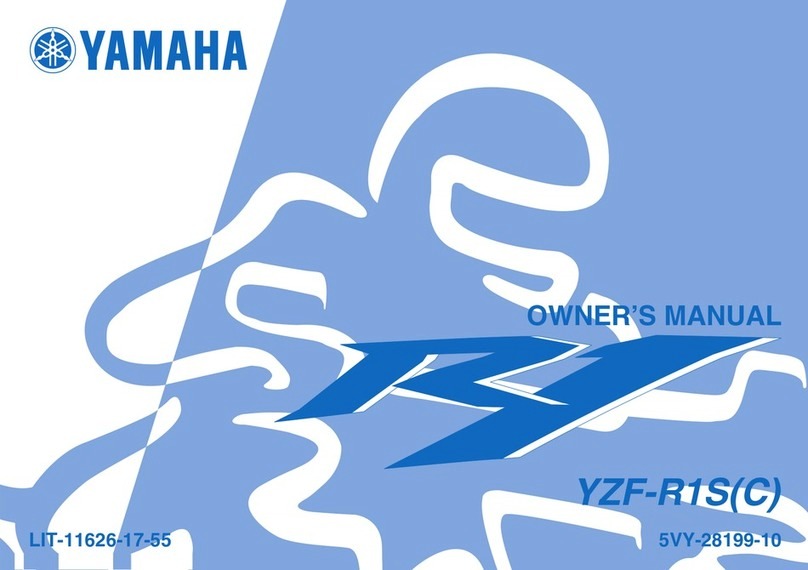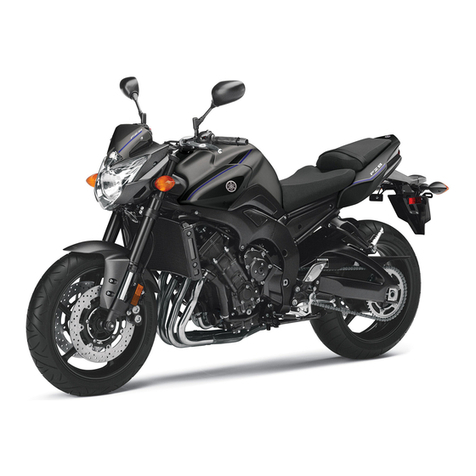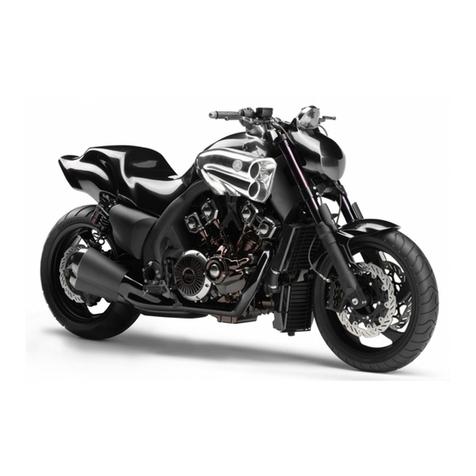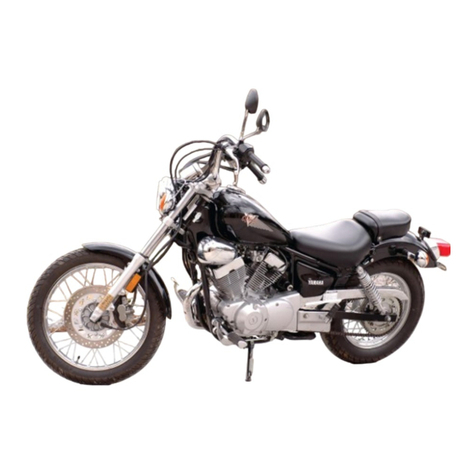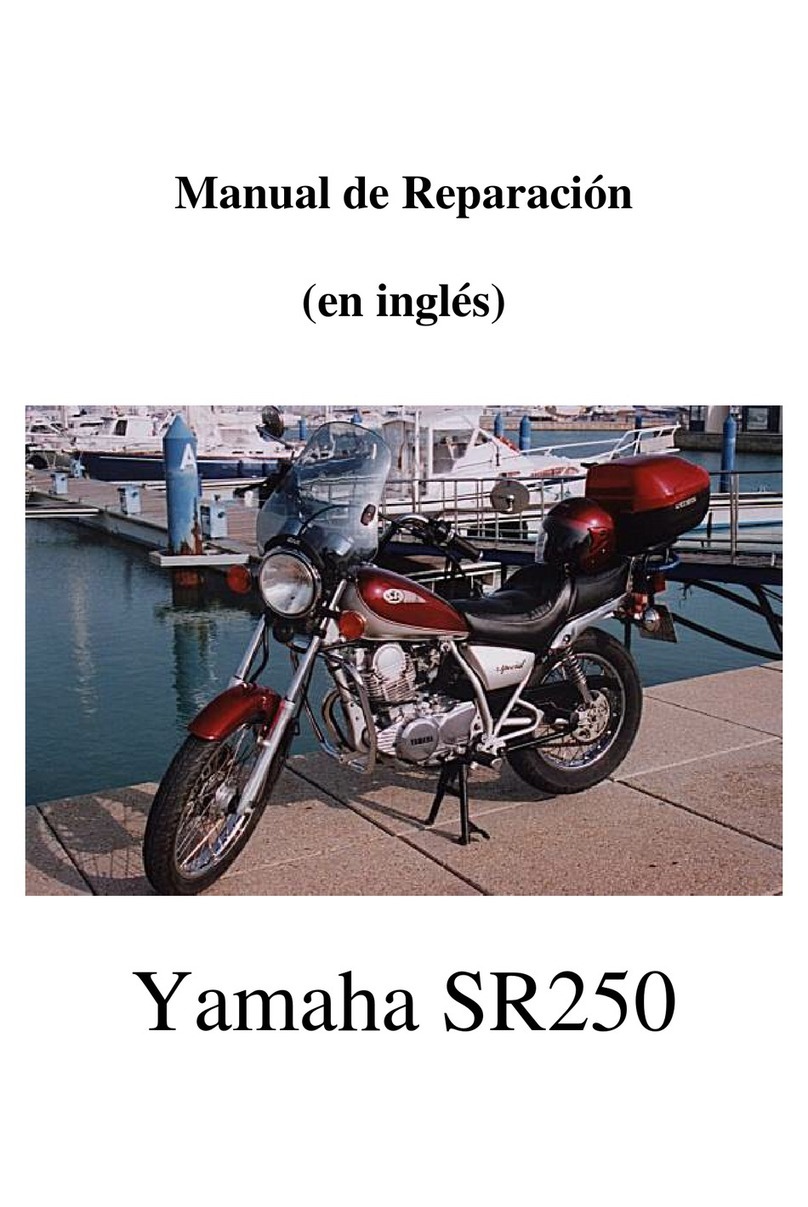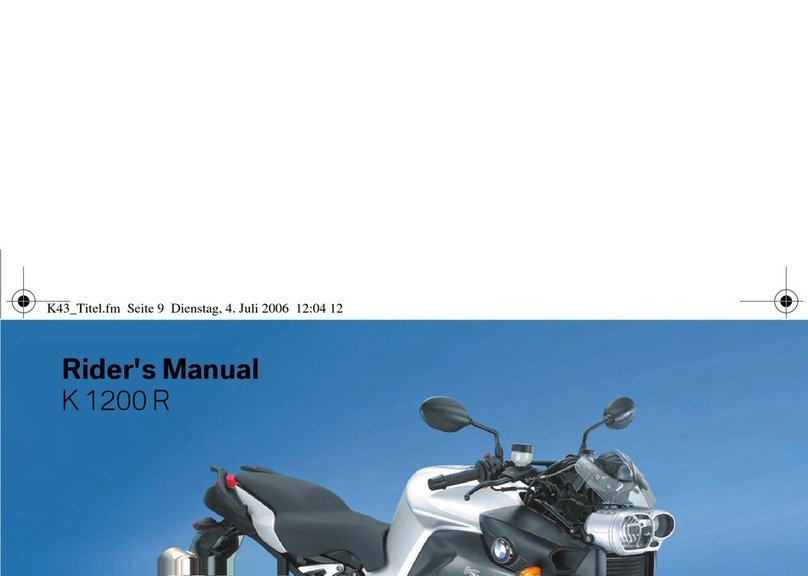
TABLE OF CONTENTS
SAFETY INFORMATION ..................1-1
Location of important labels ............1-5
DESCRIPTION ..................................2-1
Left view ..........................................2-1
Right view ........................................2-2
Controls and instruments.................2-3
INSTRUMENT AND CONTROL
FUNCTIONS .......................................3-1
Immobilizer system .........................3-1
Main switch/steering lock ................3-2
Indicator and warning lights ............3-3
Speedometer ..................................3-5
Tachometer ....................................3-5
Self-diagnosis device ......................3-5
Multi-function display ......................3-6
Handlebar switches ........................3-7
Clutch lever .....................................3-8
Shift pedal .......................................3-9
Brake lever .....................................3-9
Brake pedal ..................................3-10
Fuel tank cap ................................3-10
Fuel ...............................................3-11
Catalytic converter ........................3-12
Fuel cock ......................................3-12
Starter (choke) lever .....................3-13
Seat ..............................................3-14
Helmet holder ...............................3-14
Storage compartment ...................3-15
Adjusting the front fork ..................3-15
Adjusting the shock absorber
assemblies ................................ 3-16
Luggage strap holders ................. 3-17
Sidestand ..................................... 3-18
Ignition circuit cut-off system ........ 3-18
PRE-OPERATION CHECKS ............. 4-1
Pre-operation check list .................. 4-2
OPERATION AND IMPORTANT
RIDING POINTS................................. 5-1
Starting and warming up a cold
engine ......................................... 5-1
Starting a warm engine .................. 5-2
Shifting ........................................... 5-3
Tips for reducing fuel
consumption ............................... 5-3
Engine break-in .............................. 5-4
Parking ........................................... 5-4
PERIODIC MAINTENANCE AND
MINOR REPAIR ................................. 6-1
Owner’s tool kit ............................... 6-1
Periodic maintenance and
lubrication chart .......................... 6-2
Removing and installing panels ..... 6-5
Checking the spark plugs ............... 6-7
Engine oil and oil filter element ...... 6-8
Cleaning the air filter element ...... 6-10
Adjusting the carburetors ............. 6-11
Adjusting the engine idling
speed ........................................ 6-12
Checking the throttle cable free
play ........................................... 6-12
Valve clearance ........................... 6-13
Tires ............................................. 6-13
Cast wheels ................................. 6-15
Clutch lever .................................. 6-16
Adjusting the rear brake light
switch ....................................... 6-16
Checking the front and rear
brake pads ................................ 6-17
Checking the brake and clutch
fluid levels ................................. 6-17
Changing the brake and clutch
fluids ......................................... 6-19
Drive chain slack .......................... 6-19
Cleaning and lubricating the
drive chain ................................ 6-20
Checking and lubricating the
cables ....................................... 6-21
Checking and lubricating the
throttle grip and cable ............... 6-21
Checking and lubricating the
brake and shift pedals .............. 6-22
Checking and lubricating the
brake and clutch levers ............ 6-22
Checking and lubricating the
centerstand and sidestand ....... 6-23
Lubricating the swingarm
pivots ........................................ 6-24
U5WM23E0.book Page 1 Tuesday, August 30, 2005 4:24 PM
ProCarManuals.com
